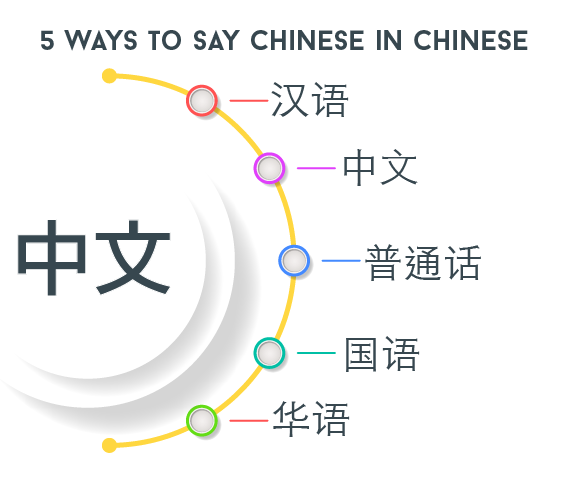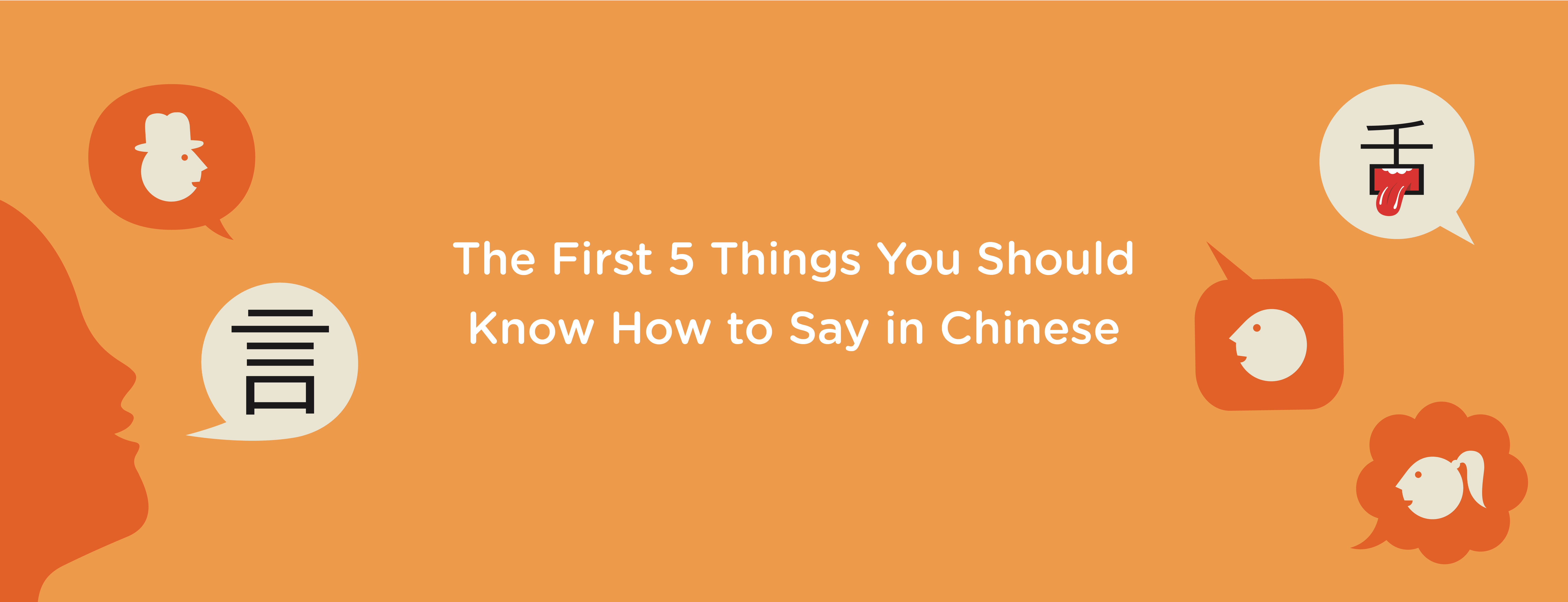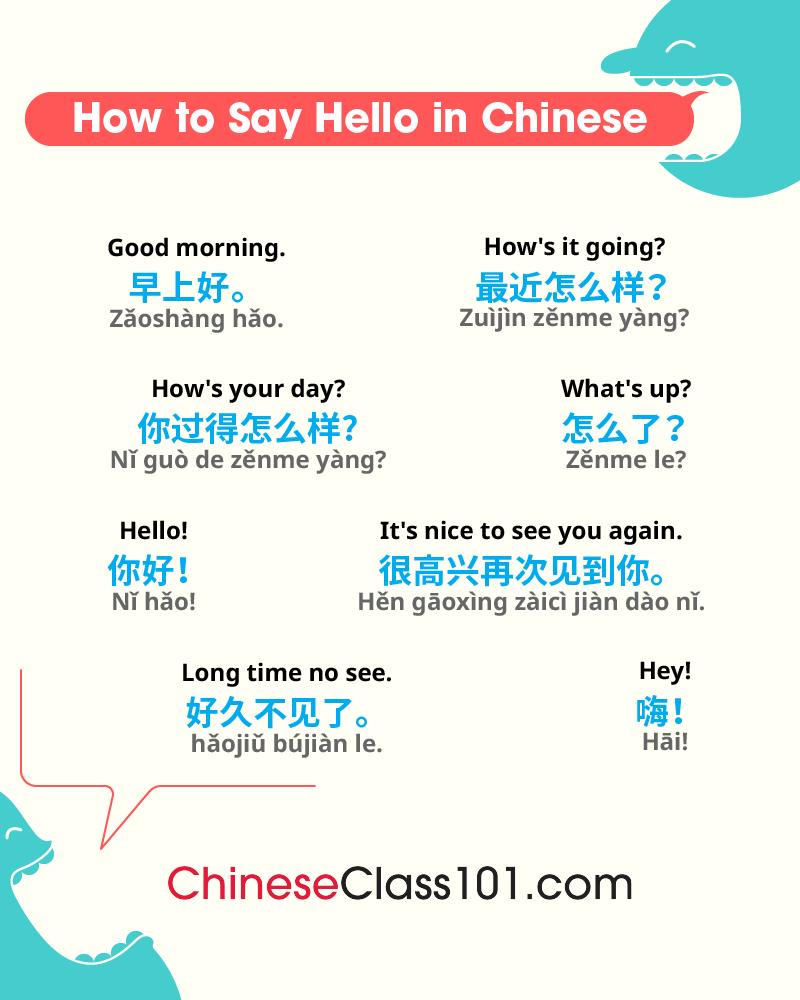
10 Different Ways to Say "VERY" in Chinese (with Examples) YouTube
The most common word for "what" in Mandarin is "shénme" (什么). It is pronounced more like "shummuh" with a falling tone. Here's a quick primer on saying "shénme": Pronunciation: "shummuh" with a falling tone on the second syllable. Say it quickly, almost as one syllable. Characters: 什么 - The first character.

Learn Greetings And Polite Words In Mandarin Chinese
To properly say "How are you" in Chinese, it's important to understand how tone and pronunciation play a major role in the language. Unlike English where intonation can change the meaning of a sentence, Mandarin Chinese relies on different tones to differentiate between words. For example, the phrase "nǐ hǎo" (你好) can mean both.

Ways to say "OK" in Chinese (With Pinyin!) r/ChineseLanguage
Ni hao (pronounced "nee haow") is the basic, default greeting in Chinese. It is written as 你好 (nǐ hǎo). The literal translation is "you ok/good," but this is the easiest way to say "hello" in Chinese. Although both words in Pinyin are marked as third tone (nǐ hǎo), the pronunciation changes a bit because two consecutive third tones.

allaboutchinese Chinese words, Mandarin chinese learning, Learn chinese characters
我来这里五天了。. Repeat! 再说一遍. Speak slowly! 慢点说. How "How?" is said across the globe. Hungarian Hogyan? Korean 어떻게.

How to say "hello" in Chinese (mandarin)/Chinese Easy Learning YouTube
Learn Chinese Mandarin. How to Say "Master" in Chinese? 师傅 & 师父 Shifu Meaning in Mandarin. Master in Chinese is 师傅 Shīfù or 师父 Shīfu. Two Shifu meaning in Mandarin. Sifu is in Cantonese. Listen to both languages…. How to Say "Teacher" in Chinese? 老师 Laoshi, 教师 Jiaoshi, 导师 Daoshi in Mandarin.
:max_bytes(150000):strip_icc()/say-hello-in-chinese-1458299-3e741b7836e541fda9fb960c120dc35f.png)
Learn Chinese Alphabet Collections Mig's Chinese
1. Practice using the four Mandarin tones. Mandarin Chinese is a tonal language, which means that different tones can change the meaning of a word, even if the pronunciation and spelling are otherwise the same. It is essential to learn the different tones if you wish to speak Mandarin Chinese correctly.

5 Ways How to say Chinese in Chinese Learn Chinese TutorMandarin
To tell the time in Chinese, use the formula 现在是 (Xiànzài shì) + time. Time is expressed by saying the number of the hour first, followed by 点 (diǎn), and then the number of the minute. For any minute under 10, read out the "zero" - 零 (líng) before the number.

Learn Chinese (FREE) Tonnes of Amazing Resources (2021 Update)
1. 你好 | Nĭhǎo | Hello! 你好, or "nĭhǎo" in pīnyīn, is the greeting most commonly taught in beginner Chinese textbooks. Composed of the characters for "you" (你 nĭ) and "good" (好 hǎo), it literally means "you good.". If you're a beginner in Chinese, you can't really go wrong with using 你好 nĭhǎo for "hello."

How to say "i love you" in Chinese (mandarin)/Chinese Easy Learning YouTube
早 (zǎo) English meaning: "Good morning.". 早 translates to "morning" in English. 早 can be used as either a noun or as a form of greeting. In Mandarin Chinese, there are generally three different ways you can greet someone with a simple "Good morning.". Other than 早, you can also say 早安 (zǎo ān) or 早上好 (zǎoshàng.

How to say "China" in Chinese (mandarin)/Chinese Easy Learning YouTube
What in Chinese is more commonly known as 什么 Shénme and is one of the Chinese Interrogative Pronouns used when constructing a Chinese question. Another word is 怎么 Zěnme with limited use for What in Mandarin as it is mostly referred to How in Chinese. When there are mentions of Demonstrative Pronouns (this, that, these, those) or.

basics in chinese Learn chinese, Chinese language words, Chinese language learning
When learning Chinese, "How" is one of the most important words that you should learn how to say. "How" has a Chinese translation of 怎么 (zěnme), the most common way to ask how something is done. However, depending on the context, you can also use other expressions. This blog post will look at different ways to say "how" in Chinese.

For Beginners The First 5 Things You Should Know How to Say in Chinese
In general, using the informal form of "yes" in Chinese is appropriate when formality is unnecessary. Conversely, If you want to say "yes" in Mandarin Chinese in a polite manner, you can use the word "是的" (shì de). That is a more polite form of "是" (shì), which is the basic word for "yes" in Mandarin.

How to say "and" in Chinese (mandarin)/Chinese Easy Learning YouTube
国语 Guóyǔ is using the 国 from 国家 meaning "country." So, this a way to say the "language of the nation" or "the language of the country." Interestingly, this phrasing is almost only used in Taiwan. It basically means Chinese and Mandarin Chinese at that. #5 华语 /Huáyǔ / Chinese Language (for overseas Chinese)

Learn Chinese Language The Fun way Greetings in Chinese part 1
By the way, if you want to learn Chinese fast and have fun, my top recommendation is Chinese Uncovered which teaches you through StoryLearning®. With Chinese Uncovered you'll use my unique StoryLearning® method to learn Chinese through story… not rules. It's as fun as it is effective. If you're ready to get started, click here for a 7-day FREE trial.

How to say "where are you going" in Chinese (mandarin)/Chinese Easy Learning YouTube
13. My name is - 我叫 (wǒ jiào) 叫 (jiào) is a verb that means "to be called", so use it when you want to tell someone your name. For example, "我叫 Noreen" means "my name is Noreen". 14. Please - 请 (qǐng) Put it at the start of your sentences to say "please". It is also a verb to mean invite or request. 15.

The Only Chinese Pronunciation Guide You’ll Ever Need
The first vocabulary you need to know about (Mandarin) Chinese.New lessons daily!=====Like this video? Sign-up today to make th.